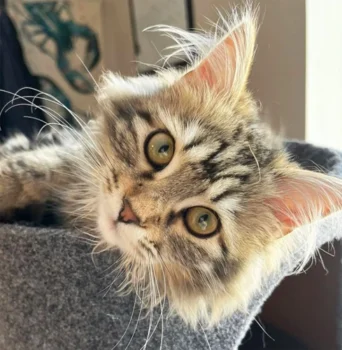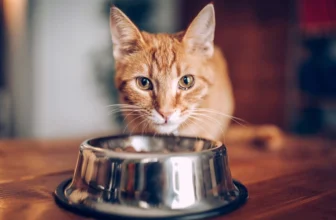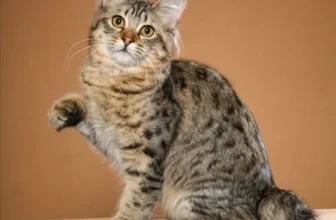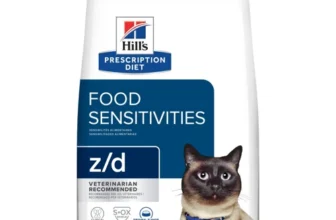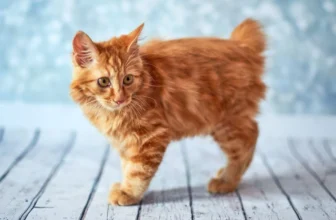Are you struggling to determine the ideal feeding schedule for your beloved American Bobtail cat? While feeding cats may seem like a simple task, providing them with the right nutrients, food quality, and quantity can be a challenge that requires careful consideration. As a pet owner, it is your responsibility to ensure your furry friend receives proper nutrition and care, which can positively impact their health and longevity. In this comprehensive guide, we’ll explore everything from the nutritional needs of your American Bobtail cat to selecting the right food and setting up the perfect feeding schedule to keep them happy, healthy, and purring. So, let’s dive right in!
The Nutritional Needs of an American Bobtail Cat
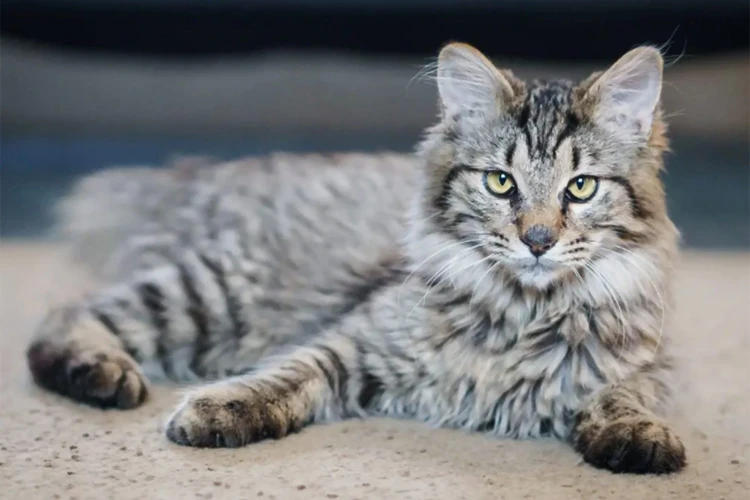
As a responsible pet owner, one of the most important things you can do for your American Bobtail cat is to provide them with a nutritious diet that meets their specific needs. An American Bobtail’s diet is a crucial component to ensure their overall health and well-being. You should consider factors such as their age, activity level, and size when deciding on the appropriate food and feeding schedule. Understanding the nutritional needs of your American Bobtail cat is key to giving them the best possible care. You can avoid common feeding mistakes by reading our feeding schedule guide and see how consistently feeding your cat at specific times can benefit them by visiting our article on feeding at specific times.
Understand the Diet of Your American Bobtail Cat
To determine the ideal feeding schedule for your American Bobtail cat, it is important to first understand their diet. American Bobtail cats are obligate carnivores, which means they require a diet high in protein and low in carbohydrates. Feeding them the wrong type of food can lead to health issues in the long term.
The Diet of an American Bobtail Cat
An American Bobtail cat’s diet should consist mainly of meat-based protein. This includes animal by-products, such as organs like liver and heart, which are high in taurine and other essential nutrients. They also need essential fatty acids, such as omega-3 and omega-6, which can be found in fish or fish oil.
Carbohydrates should be kept to a minimum in their diet. They do not require them and cannot digest them properly. Foods with high levels of grains, vegetables, and fruits should be avoided, as they can lead to digestive problems such as diarrhea and obesity.
Hydration and Liquids
Water is essential for all animals, and cats are no exception. Making sure your cat drinks enough water is important. However, unlike dogs, cats do not have a strong thirst drive and tend to not drink enough on their own. It is important to provide water in a sufficient amount.
In addition to water, canned or wet food is a great source of hydration for your American Bobtail cat. Dry food is known to be high in carbohydrates, which can lead to dehydration.
When selecting a diet for your American Bobtail cat, always read the ingredients label and make sure it is high in meat-based protein and low in carbohydrates.
A proper diet is crucial to the health and well-being of your American Bobtail cat. By feeding them the right food and ensuring adequate water intake, you will help prevent potential health problems and ensure a long and happy life for your furry friend.
Click here to learn about consistently feeding American Bobtail cats for more information.
| Food Group | Examples |
|---|---|
| Protein (50-60% of diet) | Chicken, turkey, pork, beef, fish, animal by-products (liver, heart) |
| Fat (25-30% of diet) | Fish oil, chicken fat, beef fat, tallow, lard |
| Carbohydrates (5-10% of diet) | Corn, wheat, soy, potatoes, peas, lentils |
| Vitamins and Minerals | B vitamins, vitamin E, iron, zinc, taurine |
The Nutrients Your American Bobtail Cat Needs
A balanced diet is crucial for the health and well-being of your American Bobtail Cat. It’s important to provide them with all the essential nutrients they need. Here are some of the key nutrients your American Bobtail Cat requires:
- Protein: American Bobtail Cats are obligate carnivores and require high-quality animal-based proteins for growth and maintenance of muscles, organs, and tissue.
- Fats: Fats are a source of energy and help maintain healthy skin and coat. Make sure to provide moderate amounts of healthy fats such as omega-3 and omega-6 fatty acids are which can be found in fish oils, chicken fat or flaxseed oil.
- Carbohydrates: While American Bobtail Cats don’t require carbohydrates in large amounts and obtain energy for their lifestyle from protein, small amounts of carbohydrates in the form of rice, potatoes, or peas can help with digestion and provide additional energy.
- Vitamins and minerals: Vitamins and minerals are essential for various bodily functions, including the immune system, musculoskeletal system, and nervous system. American Bobtail Cats need a range of vitamins and minerals, such as vitamins A, C, D, E, and B-complex, calcium, phosphorus, and magnesium to name a few.
It’s essential to purchase cat food that is formulated to provide all the necessary nutrients required for your cat’s well-being. Make sure to read the labels of cat food packaging and check for AAFCO nutrient profiles to ensure that the food meets the nutritional requirements for cats. By providing your American Bobtail Cat with a well-balanced diet, you can help ensure a long, healthy, and happy life for your furry friend.
Food Quality and Quantity
When it comes to feeding your American Bobtail cat, it’s not just about what you feed them, but also how much you feed them. Finding the right balance of food quality and quantity is key to ensuring that your feline friend is healthy and happy. Let’s take a closer look at both of these factors.
First and foremost, the quality of the food you feed your American Bobtail cat is crucial. A high-quality diet is essential to ensure your cat receives all the necessary nutrients for their overall health and wellbeing. Typically, a good quality cat food will include a high percentage of protein from animal sources, as well as fatty acids, vitamins, and minerals.
In contrast, low-quality cat food typically contains fillers, artificial colors, and flavorings, and is often made from by-products that are not fit for human consumption. Unfortunately, these types of foods are generally less expensive than high-quality foods, but in the long run, they can have a negative impact on your cat’s health, leading to issues such as obesity, dental problems, and even more severe health conditions.
To help you better understand the nutritional value of different cat foods, here’s a helpful comparison chart:
| Type of Cat Food | Pros | Cons |
|---|---|---|
| Dry Cat Food | – Economical and Convenient – Promotes Dental Health |
– Lower in Quality Protein – Can Cause Dehydration – May Lead to Obesity |
| Wet Cat Food | – High-Quality Protein – Moisture Content Helps Prevent Urinary Tract Infections |
– More Expensive – Can Promote Dental Issues – Can Cause GI Upset if Overfed |
| Raw Cat Food | – High-Quality Protein – Natural – Can Aid Digestion |
– Time-Consuming to Prepare – Can be Expensive – Risk of Contamination |
As you can see, every type of cat food has its pros and cons, and it’s important to determine which type is best for your American Bobtail cat’s individual needs.
Along with food quality, the quantity of food you feed your cat is equally important. Overfeeding your cat can lead to obesity, which can cause a range of health problems. The amount of food your cat needs depends on their age, weight, and overall health status. Typically, adult American Bobtail cats should be fed around 2-3 small meals per day, while kittens and senior cats may require more frequent, smaller meals.
When feeding your cat, be sure to measure out the appropriate portion size based on their weight and age, and avoid free-feeding, which can lead to overeating. Gradual weight gain over time is easy to miss, so it’s important to monitor your cat’s weight and body condition score regularly. Adjusting the feeding schedule or portion size as needed can help keep your cat at a healthy weight and prevent health issues from arising.
Finding the right balance of food quality and quantity is key to ensuring your American Bobtail cat stays healthy and happy. By choosing high-quality cat food and providing the right portions at the right times, you can help your cat live a long and healthy life.
The Ideal Feeding Schedule for an American Bobtail Cat
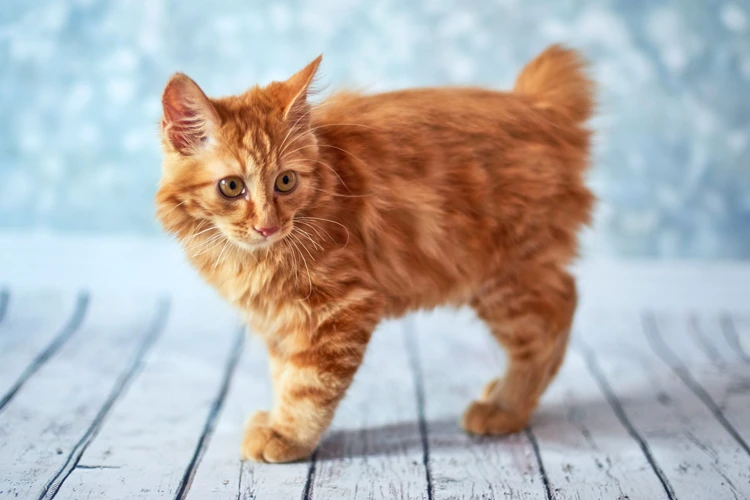
Cats are creatures of habit and routine, which makes setting up an ideal feeding schedule important for their health and happiness. As an American Bobtail cat owner, you want to ensure that your furry friend is getting the right nutrition and the right amount of food at the right time. But how often should you feed your American Bobtail cat, and how much should you be giving them? In this section, we’ll look at the ins and outs of feeding schedules for American Bobtail cats, and provide you with the information you need to create a plan that works for both you and your pet.
Frequency of Feeding
When it comes to determining the ideal feeding schedule for your American Bobtail Cat, the frequency of feeding is a crucial aspect to consider. As a pet owner, you want to ensure that your furry friend gets the right amount of food and proper nutrition. So, how often should you feed your American Bobtail Cat?
Factors to Consider
The feeding frequency of your American Bobtail Cat depends on various factors, such as age, weight, activity level, and overall health. Kittens and younger cats need to be fed more often compared to adult cats, as they have faster metabolism rates and require more energy for growth and development. On the other hand, senior cats may need to be fed lesser but more frequent meals to prevent digestive issues and obesity.
Recommended Feeding Frequency
As a general guideline, it is recommended to feed adult American Bobtail Cats twice a day, with equal amounts at around 12 hour intervals. This ensures that your cat gets regular and consistent meals, which helps maintain their overall health, appetite, and behavior. However, for kittens, it is recommended to feed them three to four times a day until they reach six months of age.
Sample Feeding Schedule
To determine the ideal feeding schedule for your American Bobtail Cat, use the following table as a reference:
| Age | Feeding Frequency | Amount per Meal |
|---|---|---|
| Kitten (2-4 months) | 4 times a day | 1/4 to 1/3 cup per meal |
| Kitten (4-6 months) | 3 times a day | 1/3 to 1/2 cup per meal |
| Adult Cat | 2 times a day | 1/4 to 1/3 cup per meal |
| Senior Cat | 2-3 times a day | 1/4 cup per meal |
It’s important to note that this is just a rough guideline, and you should also consider the recommendations of your veterinarian and the specific dietary needs of your cat. Monitoring your cat’s weight, appetite, and overall health can also help you adjust their feeding schedule accordingly.
The frequency of feeding is an essential aspect to consider when determining the ideal feeding schedule for your American Bobtail Cat. By keeping in mind the recommended feeding frequency and using the table as a reference point, you can ensure that your cat gets the right amount of nutrition and meals to maintain their overall health and well-being.
Setting up a Feeding Schedule
When it comes to setting up a feeding schedule for your American Bobtail cat, there are a few things to keep in mind. Follow these steps to create a schedule that will meet the nutritional needs of your cat:
- Consult with your veterinarian: Before setting up a feeding schedule, it’s a good idea to consult with your veterinarian to determine the appropriate amount and type of food to feed your cat based on their age, weight, and health conditions.
- Determine how often to feed your cat: Generally, adult American Bobtail cats should be fed two to three times a day, while kittens may require more frequent feedings. Use your cat’s age and activity level as a guide to determine how often to feed them.
- Choose the feeding times: Once you have determined how often to feed your cat, choose specific times of the day to feed them. This will help establish a routine for your cat and make it easier for you to stick to the schedule.
- Keep track of the portions: Use a measuring cup or a kitchen scale to measure out the appropriate amount of food for each meal. Keeping track of portions will help ensure that your cat is getting the right amount of nutrition and can also help with weight management.
- Stick to the schedule: Once you have set up a feeding schedule, try to stick to it as much as possible. Consistency is key in establishing a routine for your cat and ensuring that they are getting the nutrition they need.
By following these steps and setting up a feeding schedule that works for both you and your American Bobtail cat, you can help ensure that your furry friend is getting the nutrition they need to live a happy and healthy life.
Portion Control and Monitoring
Proper portion control is essential for ensuring that your American Bobtail cat maintains a healthy weight. Overfeeding can lead to obesity and related health problems, while underfeeding can leave your cat malnourished. Here are some tips to help you control and monitor your cat’s portions:
| Tip | Description |
|---|---|
| Weigh your cat | Knowing your cat’s weight will help you determine how much food to give him. Use a digital scale to weigh your cat at least once a month. |
| Use a measuring cup | Don’t rely on guesswork to measure your cat’s food. Use a measuring cup to ensure that you’re giving him the proper portion size recommended by the cat food manufacturer. |
| Go slow with changes | If you’re switching to a new food or changing the amount you’re feeding your cat, do it gradually. Sudden changes can upset your cat’s digestive system and cause vomiting or diarrhea. |
| Monitor your cat’s weight | Weigh your cat regularly and keep track of his weight. If you notice a steady increase or decrease in weight, adjust his portion size accordingly. |
| Don’t free-feed | Leaving food out all day can encourage overeating. Instead, feed your cat small portions at set times throughout the day. |
| Don’t give in to begging | Some cats are skilled at begging for extra food. Stick to your feeding schedule and portion sizes, and resist the temptation to give your cat extra treats. |
Remember, maintaining a healthy weight is important for your American Bobtail cat’s overall health and well-being. By controlling and monitoring his portions, you can help ensure that he stays healthy and happy for years to come.
Treating Your American Bobtail Cat
When it comes to treating your American Bobtail cat, it’s important to keep a few things in mind. Treats should not make up a large part of their diet, as overfeeding treats can lead to obesity and other health problems.
1. Choose Healthy Treats: When choosing treats for your American Bobtail cat, opt for healthy options that are low in calories and high in nutrients. Some good options include small pieces of cooked chicken or fish, freeze-dried meat, or small amounts of plain yogurt.
2. Limit Treats: While it’s okay to give your American Bobtail cat the occasional treat, it’s important to limit the amount you give them. Treats should make up no more than 10% of their total calorie intake.
3. Use Treats for Training: Treats can be a helpful tool for training your American Bobtail cat. Use small pieces of treat as a reward for good behavior, but be sure not to overdo it.
4. Avoid Certain Foods: Some human foods can be toxic to cats, so it’s important to avoid giving your American Bobtail cat foods like chocolate, onions, and garlic.
5. Monitor Your Cat’s Weight: If you notice that your American Bobtail cat is gaining weight, it may be time to cut back on treats or adjust their overall diet. Monitor your cat’s weight regularly and consult with your veterinarian if you have concerns.
By following these tips and treating your American Bobtail cat in moderation, you can help keep them healthy, happy, and at a healthy weight.
Special Considerations for Feeding Your American Bobtail Cat
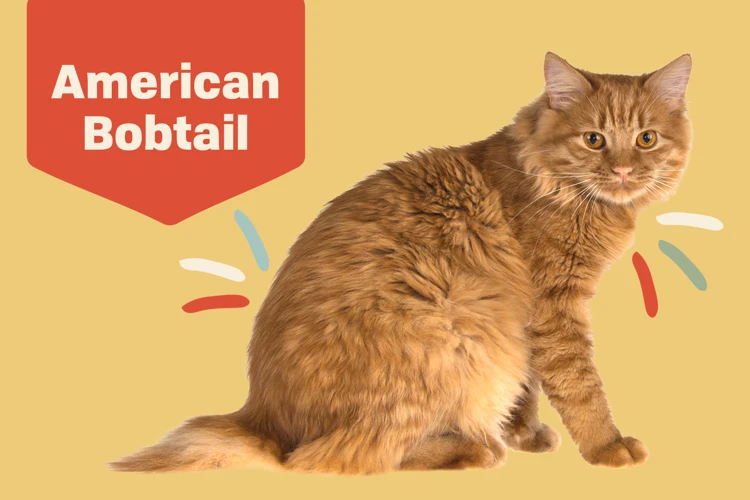
As a responsible cat owner, it’s important to understand that different American Bobtail cats have unique nutritional requirements that may require special considerations. It is crucial to carefully consider your cat’s age, weight, and health when determining the ideal feeding schedule and diet plan. In this section, we will discuss some key factors to consider when feeding your American Bobtail cat to ensure they remain healthy and happy. So, let’s dive in!
Weight Management for American Bobtail Cats
As important as it is to feed your American Bobtail cat the right kind of food and the right amount of food, it’s also vital to keep an eye on their weight to ensure they stay healthy. While American Bobtails aren’t prone to obesity like other breeds, it’s still important to keep them at a healthy weight. Overweight cats are at risk of developing a range of health problems, including diabetes, heart disease, and breathing problems. Here are some tips for managing your American Bobtail’s weight:
| Tip | Description |
|---|---|
| Regular weigh-ins | Regularly weighing your American Bobtail can help you keep track of their weight and catch any weight gain or loss early on. Experts recommend weighing your cat every two weeks. |
| Playtime | Playing with your American Bobtail is a great way to keep them active and burn off some calories. Try to spend at least 10-15 minutes a day playing with your cat. |
| Portion control | Controlling your American Bobtail’s portions is vital to managing their weight. Use a measuring cup to make sure you’re giving them the right amount of food, and avoid overfeeding them with treats. |
| Dietary changes | If your American Bobtail is overweight, you may need to make some dietary changes. Consult with your vet about a weight-loss plan, and consider incorporating high-protein, low-carb foods into their diet. |
| Regular vet visits | Regular check-ups with your vet can help catch any weight gain or loss early on. Your vet can also offer guidance on managing your American Bobtail’s weight. |
By following these tips, you can help keep your American Bobtail cat at a healthy weight and prevent them from developing health issues related to obesity. Remember to consult with your vet before making any significant changes to your cat’s diet or exercise routine to ensure they stay healthy and happy.
Feeding Kittens and Senior Cats
Feeding the youngest and oldest members of your American Bobtail cat family requires special attention. Kittens need a specialized diet to support their growth and development, while senior cats require a different level of nutrition to prevent health problems. Here’s what you need to know about feeding kittens and senior cats.
Feeding Kittens
Kittens have high energy requirements due to their rapid growth rate. They need food that is rich in proteins, fats, and essential nutrients. The recommended calorie intake for kittens is around 250-300 calories per day, depending on their weight and activity level.
To meet their nutritional needs, you should feed your American Bobtail kitten a diet that is specifically formulated for kittens. Look for food that contains high-quality proteins like chicken, turkey, or fish, as well as essential fatty acids and minerals like calcium and phosphorus to support their bone development. You should avoid feeding your kitten human food, particularly milk, as it can upset their stomach and cause diarrhea.
It is important to feed kittens small, frequent meals throughout the day. Experts recommend feeding kittens three to four small meals per day. You can use the following table as a guide to determine the proper feeding schedule for your kitten based on their age:
| Age (in weeks) | Number of Meals per Day |
|---|---|
| 4-6 | 4 |
| 7-10 | 3-4 |
| 11-14 | 3 |
| 15-20 | 3 |
| 20 and older | 2-3 |
Remember to provide plenty of fresh water throughout the day to keep your kitten hydrated.
Feeding Senior Cats
As your American Bobtail cat ages, their metabolism slows down, and they become less active. Their nutritional needs change as well. Senior cats require less protein and calories and more fiber to prevent digestive problems. Feeding senior cats a low-calorie diet can also help prevent obesity and weight-related health problems.
When choosing food for your senior American Bobtail, look for a diet that contains high-quality proteins like chicken and fish, and added supplements like glucosamine and chondroitin for joint support. Senior cats may also benefit from a low-carbohydrate diet to reduce the risk of developing diabetes.
It’s important to feed your senior cat small, frequent meals throughout the day to prevent digestive problems like constipation. You can use the following table, which is based on age and weight, to help you determine the appropriate feeding schedule and portion size for your senior cat:
| Age (in years) | Weight (in pounds) | Number of Meals per Day | Portion Size (in cups) |
|---|---|---|---|
| 7-10 | 4-7 | 2-3 | 1/4-1/2 |
| 11-14 | 4-7 | 2-3 | 1/8-1/4 |
| 15+ | 4-7 | 2-3 | 1/8 |
It’s important to talk to your veterinarian about your American Bobtail cat’s nutritional needs, particularly if they have any medical conditions. Follow their advice on what to feed your cat and how much to give them.
Feeding Pregnant or Nursing Cats
When it comes to pregnant or nursing American Bobtail cats, their nutritional needs change. During these stages, cats require more calories and nutrients to support the growth of their litter and to produce milk. It is essential to make changes to their feeding schedule and diet during this time to ensure their health and the health of their kittens.
Consult Your Vet
First and foremost, it is important to consult with your veterinarian about the specific nutritional needs of your pregnant or nursing American Bobtail cat. They will be able to recommend a diet that meets the individual needs of your cat and her developing kittens. Your vet may also prescribe supplements and vitamins to help support their health during this time.
More Frequent Feedings
Pregnant and nursing cats may require more frequent feedings throughout the day, as their appetite increases during this time. It is recommended to feed them 3-4 small meals throughout the day instead of one or two larger meals. This helps with digestion and prevents overeating.
Increased Caloric Intake
Providing your pregnant or nursing American Bobtail cat with a high-calorie diet is crucial during this stage. It is recommended to switch to kitten food, which has higher levels of calories and nutrients than adult cat food. The type of kitten food you choose should be high in protein, calcium, and other essential nutrients. This will help your cat maintain a healthy weight, and ensure that her kittens are getting all the nutrients they need.
Here is a table of recommended nutrient percentages for pregnant or nursing cats:
| Nutrient | Percentage |
|---|---|
| Protein | 35%-50% |
| Fat | 20%-35% |
| Calcium | 0.8%-1.2% |
| Phosphorus | 0.6%-1% |
Hydration
It is also essential to ensure that your pregnant or nursing American Bobtail cat is well hydrated during this time. Feeding wet food can help with this as it provides additional moisture. Additionally, keeping a fresh and clean water source available at all times is crucial to maintain hydration.
Closely Monitor Weight
It is crucial to closely monitor your pregnant or nursing American Bobtail cat’s weight during this time. While weight gain is expected during pregnancy and nursing, excessive weight gain can lead to health problems. Conversely, significant weight loss can also be a cause for concern. Consulting with your veterinarian on a regular basis can help catch any potential issues early and prevent complications from arising.
Feeding pregnant and nursing American Bobtail cats can be a bit more complicated than feeding other cats. However, by following the above tips and working closely with your veterinarian, you can ensure that your cat gets the nutrition she needs to produce healthy kittens while maintaining her own health.
Choosing the Right Food for Your American Bobtail Cat
Your American Bobtail cat’s diet is a crucial aspect of their health and well-being. Choosing the right food for your furry friend can be overwhelming, given the variety of options available in the market. However, with a little bit of research and effort, finding appropriate food for your American Bobtail cat can be done. In this section, we will discuss the factors to consider when choosing the right food for your American Bobtail cat, including dry vs. wet food, high-quality cat food, and homemade food for American Bobtail cats.
Dry Food vs. Wet Food
When it comes to choosing the right food for your American Bobtail Cat, one of the main decisions you will need to make is whether to feed them dry food or wet food. Both options have their pros and cons, so it’s important to consider each one carefully before making a decision.
Dry Food is a popular choice for many cat owners because it is convenient and can be left out for your cat to eat throughout the day. It also tends to be less expensive than wet food and has a longer shelf life. However, it is important to note that some cats may not drink enough water to compensate for the lack of moisture in their food, which could lead to dehydration and other health issues. If you do decide to feed your American Bobtail Cat dry food, make sure they have access to a clean and fresh water source at all times.
Wet Food is higher in moisture content than dry food, which can help keep your cat hydrated and prevent urinary tract issues. It is also more palatable for many cats and can be a good option for picky eaters who may not enjoy dry food. However, it tends to be more expensive than dry food and may not be as convenient to feed if you are out of the house for extended periods of time.
To help you decide which option is best for your American Bobtail Cat, consider their individual needs and preferences. You may also want to consult with your veterinarian for guidance on the best type of food to feed your cat.
To summarize, here is a table comparing the pros and cons of dry food and wet food:
| Dry Food | Wet Food | |
|---|---|---|
| Pros | Convenient; less expensive; longer shelf life | Higher moisture content; more palatable |
| Cons | May lead to dehydration; some cats may not enjoy the taste | More expensive; not as convenient to feed |
Remember, no matter what type of food you choose to feed your American Bobtail Cat, make sure it is high-quality and meets their nutritional needs. A healthy and balanced diet is key to keeping your cat happy and thriving.
Choosing High-Quality Cat Food
When it comes to choosing high-quality food for your American Bobtail cat, it can be overwhelming with so many options available in the market. However, if you keep a few key points in mind, you can ensure that you’re providing your furry friend with the best possible nutrition.
1. Look for Specific Protein Sources: American Bobtail cats are obligate carnivores, which means they require a high-protein diet. Look for cat food that has named meat as the first ingredient. Avoid food that merely lists “meat” or “poultry” as the first ingredient, as this can include low-quality and indigestible parts of the animal.
2. Check for Carbohydrate Content: While carbohydrates are essential for energy in cats, they should not be the primary ingredient in their food. Look for brands with a low carbohydrate count, preferably below 10%.
3. Avoid Artificial Preservatives: Artificial preservatives are commonly used to extend shelf life in cat food. However, they can be harmful to your cat’s health in the long run. Look for natural preservatives like vitamin E or rosemary extract.
4. Grain-free Options: Cats are obligate carnivores and don’t require grains in their diet. Look for grain-free options that have a higher protein content.
5. AAFCO Statement: Look for the AAFCO (Association of American Feed Control Officials) statement on the food label. This statement indicates that the food has undergone certain tests to ensure that it meets the nutritional requirements for cats.
6. Consult Your Vet: Your veterinarian can provide valuable insights into what a high-quality diet looks like for your American Bobtail cat. It’s always worth consulting them before making any significant changes to your cat’s diet.
By following these guidelines and keeping an eye out for high-quality ingredients, you can ensure that your American Bobtail cat is getting the nutrition it needs to maintain good health.
Homemade Food for American Bobtail Cats
If you are interested in preparing homemade food for your American Bobtail cat, it is essential to understand the proper nutritional requirements your cat needs to maintain good health. Preparing homemade cat food is an opportunity to be more involved in your cat’s diet and ensure that they eat whole foods free from additives, fillers, and preservatives.
However, it is important to balance the right components and quantities to provide your furry friend with the nourishment they need. Homemade cat food should consist of protein, carbohydrates, and fats in the right proportions.
Proteins: The main component of a cat’s diet should be protein, as they need it for muscle growth and other crucial body functions. Cooked and deboned chicken, turkey, and beef are good sources of protein for your cat.
Carbohydrates: Your cat needs carbohydrates to provide energy and support organ function. Good sources of carbohydrates include cooked sweet potatoes, peas, carrots, oatmeal, and rice.
Fats: Cats require fats in their diet to keep their coat and skin healthy. Cooked fish or fish oil, egg yolks, and chicken fat are excellent sources of fat for homemade cat food.
It is best to consult with a veterinarian or a qualified animal nutritionist to avoid any nutritional deficiencies and to ensure that the homemade food you are preparing suits your cat’s specific health requirements.
If you decide to prepare homemade food, make sure to follow specific guidelines for storage, handling, and preparation to minimize the risk of foodborne illnesses. A well-balanced homemade diet can provide your American Bobtail cat with a healthy and nutritious meal option.
Here’s a table to summarize the components and quantities required to prepare homemade food for your American Bobtail cat:
| Component | Quantity |
|---|---|
| Protein | 60-70% |
| Carbohydrates | 10-15% |
| Fats | 15-20% |
Conclusion
After reading this article, you should now have a good understanding of the nutritional needs of an American Bobtail cat and how to determine the ideal feeding schedule for your feline friend. It’s important to understand that each cat is unique and may require adjustments to their feeding schedule based on their age, weight, and overall health.
Remember to choose high-quality cat food that contains all the necessary nutrients your American Bobtail cat needs. Consider factors such as dry vs. wet food and whether to make homemade food or not. Ensure you monitor your cat’s weight, adjust portion sizes as necessary, and keep them hydrated.
By following the recommendations outlined in this article, you can ensure that your American Bobtail cat is healthy and well-fed. Regular veterinary check-ups can also help you stay on track and identify any potential issues with your cat’s diet. With proper nutrition and care, your American Bobtail cat can live a long and happy life by your side.
Frequently Asked Questions
1. How often should I feed my American Bobtail cat?
Adult American Bobtail cats should be fed 2-3 times a day, while kittens require more frequent feedings.
2. Can I leave food out for my American Bobtail cat all day?
No, it is not recommended to leave food out for your American Bobtail cat all day. This can lead to overeating and obesity.
3. What type of diet do American Bobtail cats need?
American Bobtail cats need a balanced diet that includes protein, fat, and carbohydrates, as well as fiber and essential vitamins and minerals.
4. Should I give my American Bobtail cat wet or dry food?
There is no one-size-fits-all answer to this question. Both wet and dry food can be healthy for your American Bobtail cat, as long as the food is high quality and meets their nutritional needs.
5. How much food should I give my American Bobtail cat?
The amount of food your American Bobtail cat needs depends on their age, weight, and activity level. It’s best to consult with your veterinarian to determine the appropriate portion size.
6. Can I give my American Bobtail cat human food?
Some human foods can be toxic to cats, so it’s important to be careful about what you give them. Stick to cat-specific treats and avoid sharing your own food.
7. How can I tell if my American Bobtail cat is overweight?
You can tell if your American Bobtail cat is overweight by feeling their ribs – if you can’t feel them easily, they may be obese. You can also consult with your veterinarian to determine if your cat is at a healthy weight.
8. How do I transition my American Bobtail cat to a new type of food?
Gradually mix the new food with their old food over a period of 7-10 days, increasing the amount of new food and decreasing the amount of old food each day.
9. Should I give my American Bobtail cat vitamins or supplements?
It’s best to consult with your veterinarian before giving your American Bobtail cat any vitamins or supplements. In general, a healthy diet should provide all of their necessary nutrients.
10. Can I feed my American Bobtail cat a homemade diet?
If you choose to feed your American Bobtail cat a homemade diet, it’s important to ensure that it is balanced and meets their nutritional needs. Consult with your veterinarian or a veterinary nutritionist to make sure you are providing a healthy diet.

